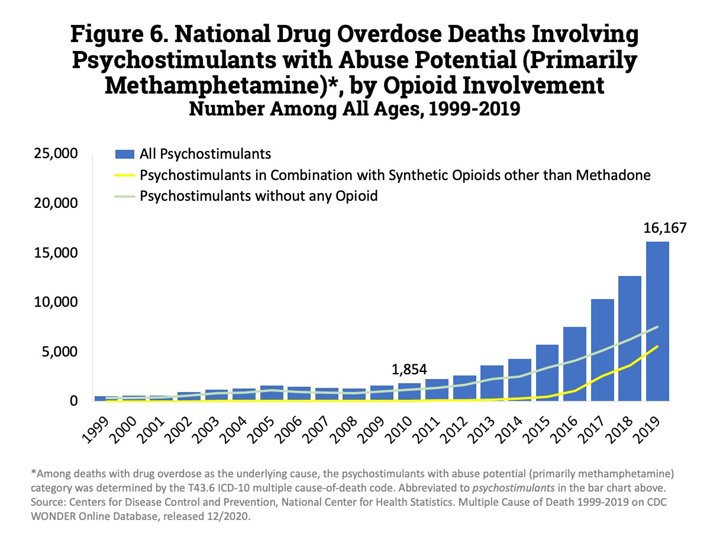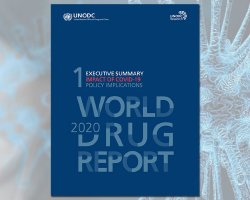Meth Overdose Deaths Tripled in Recent Years

Newly published reports from the Centers for Disease Control and Prevention and other organizations have shed light on recent surges in methamphetamine-related overdose deaths. According to the data, meth fatalities have tripled in recent years. And these aren’t just slight upticks either. Thousands of Americans are now dying from methamphetamine overdoses.
Based on what we already know about meth, using methamphetamine by itself is dangerous and can cause death. But more recently, meth-related overdose fatalities have also been traced back to meth samples that had been contaminated with powerful opioids such as fentanyl. Often, addicts don’t even know that the meth they are about to use has opioids in it. Today, addicts who use meth are playing Russian Roulette with their lives.
Meth Overdose Fatalities Surge
From 2015 to 2019, researchers found that fatal overdoses connected to methamphetamine increased by almost 180%, even though the number of people reporting methamphetamine use only increased by 43%. These findings suggest that methamphetamine use is becoming far more deadly, as the increasing rate of meth-related deaths has far outpaced the increasing rate of meth use.
The researchers attributed several causal factors to the almost tripling in meth deaths. They found that users were becoming riskier in their use patterns, shifting more towards IV meth use rather than smoking meth. They also found that the demographics of meth use have largely shifted to populations with worse socioeconomic risk factors and other health comorbidities. And finally, they found that people who had died from meth use often had opioids present in their system at the time of death, suggesting that opioids are being mixed into the meth supply, often without addicts being aware of it.
“… In addition to heroin, methamphetamine and cocaine are becoming more dangerous due to contamination with highly potent fentanyl, and increases in higher-risk use patterns such as multiple substance use and regular use.”
Discussing the findings, Director of the National Institute on Drug Abuse Dr. Nora Volkow had this to say, “We are in the midst of an overdose crisis in the United States, and this tragic trajectory goes far beyond an opioid epidemic. In addition to heroin, methamphetamine and cocaine are becoming more dangerous due to contamination with highly potent fentanyl, and increases in higher-risk use patterns such as multiple substance use and regular use.” Dr. Volkow’s warning is clear. All forms of drug use are becoming more dangerous, more likely to be lethal.
What is Methamphetamine?
Methamphetamine, or “meth,” is a powerful, highly addictive stimulant that significantly affects the user’s central nervous system. Methamphetamine usually appears in crystal-like glassy fragments that are usually blueish-white in color.
Methamphetamine increases the amount of the natural chemical dopamine in the brain. Given that dopamine is involved in pleasure sensations, body movement, motivation, and the reinforcement of rewarding behaviors, taking meth and the resulting spike in dopamine levels in the brain seem pleasurable at first, hence the “high” that individuals feel when they take meth.
What are the Effects of Taking Meth?

Even without opioid drugs being added into the meth supply, using pure meth by itself is still highly dangerous. Some of the short term effects of experimenting with meth include:
- A notable increase in wakefulness and overall physical activity.
- Decreased appetite, often to the point of missing meals for a day or more.
- Faster breathing, sometimes to the point of hyperventilating.
- Rapid and irregular heartbeat.
- Increased blood pressure.
- Increased body temperature.
And those are just some examples of the short-term effects of using meth. The long-term effects are even more concerning. Also, the long-term effects of using meth are varied. Some users experience extreme weight loss, addiction, and severe dental problems. Others will develop severe anxiety, changes in brain structure and function, confusion, memory loss, and changes in sleeping patterns. Some users will develop severe itching, to the point where they experience skin sores and lesions from scratching. Others will become violent and may even experience paranoia or hallucinations.
Continued methamphetamine use can cause changes in the brain’s dopamine system, critically in the areas connected to coordination, verbal learning, emotion, and memory. People who use meth can experience significant, even permanent losses in all of these areas, including substantial cognitive impairment and decline.
Methamphetamine is not only addictive and physically harmful, but the long-term effects of using this drug can leave the person with a lifetime of struggle and hardship.
Primary Culprit in Soaring Meth-Related Overdoses

Opioids seem to be a major driver behind the surge in meth-related deaths. From a Pew Research report, ”Three years into what epidemiologists are calling the third wave of the opioid epidemic—in which fentanyl has been involved in the vast majority of opioid overdose deaths—the lethal drug is now showing up in the bodies of nearly as many people who used cocaine and meth as those who used heroin.” This is extremely significant. Coroners are increasingly releasing toxicology reports that show meth addicts aren’t just dying from meth; they’re dying from meth that’s been contaminated with opioids.
This new finding is extremely concerning for what the future may hold. With millions of Americans admitting to meth use, this could mean we’ve only just begun to experience the surge in meth/opioid-related deaths. This problem could become much, much worse if Americans don’t work together to help meth addicts seek treatment.
The Importance of Getting Off of Drugs as Soon as Possible
Soaring instances across the nation of opioid substances being added into supplies of non-opioid drugs like meth and cocaine have created an extremely dangerous situation in which NO addict is even remotely “safe” from a fatal overdose. Even addicts purposely trying to avoid using opioids are at risk, as their drug supply may be contaminated with fentanyl or other opioid substances without them knowing it.
One could argue that there has never been a more dangerous time to be addicted to drugs than now because overdose fatalities for multiple drug types are soaring. According to the CDC, overdose deaths surged by 30% in 2020 alone, with more than 93,331 Americans dying from drug overdoses, compared to 72,151 overdose deaths in 2019. Furthermore, overall overdose deaths have likely never been higher.

That’s why it is so important that those who are addicted to drugs seek treatment at qualified drug and alcohol rehab centers as soon as possible.
If you know someone who is using meth, opioids, cocaine, alcohol, or any other addictive and mind-altering substance, please don’t hesitate to get them help at a treatment center as soon as possible. Drug addiction has always been a life-or-death issue. And with tens of thousands of Americans dying from drugs each year, that fact has never been more clear. Contact a rehab center today.
Sources:
- https://jamanetwork.com/journals/jamapsychiatry/article-abstract/2784468?resultClick=3
- https://www.usnews.com/news/health-news/articles/2021-09-23/us-meth-overdose-deaths-tripled-in-recent-years
- https://www.drugabuse.gov/publications/drugfacts/methamphetamine
- https://www.pewtrusts.org/en/research-and-analysis/blogs/stateline/2019/05/13/as-the-opioid-crisis-peaks-meth-and-cocaine-deaths-explode
- https://www.cdc.gov/nchs/pressroom/nchs_press_releases/2021/20210714.htm


 ®
®